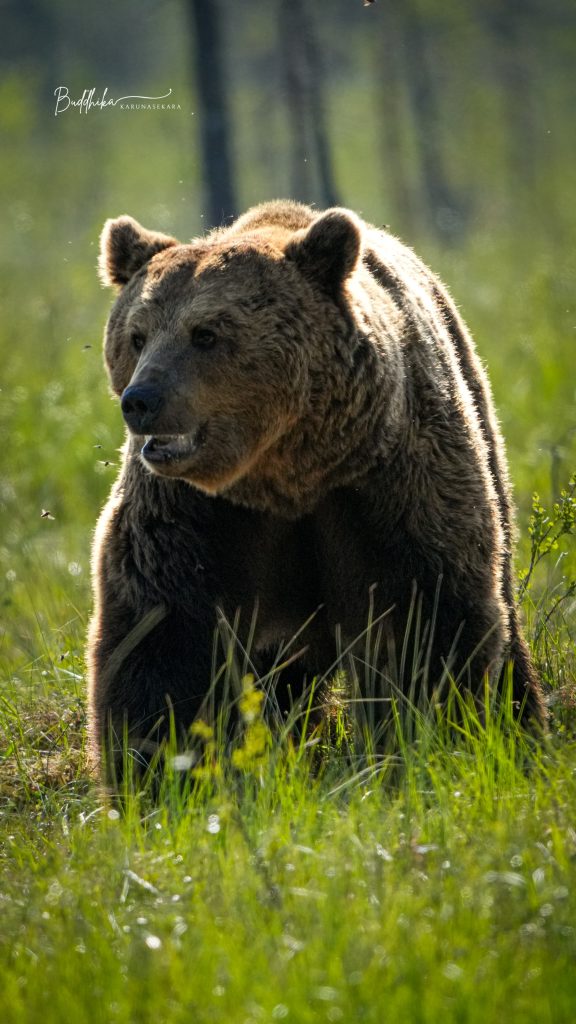
With a hulking frame, shaggy coat, and strength that seems carved from the mountains, the bear has long stood as a symbol of power and mystery. It moves with a surprising grace for its size, roaming forests, riversides, and high places where humans have always felt its presence near. Both feared and revered, the bear is a creature that walks between the worlds of beast and spirit.
In European folklore, the bear often embodies raw strength and courage. Among the Celts, it was linked to the goddess Artio, a protective spirit of fertility and abundance. The very name Arthur is thought by some to come from the Celtic word for bear, connecting kingship and the great beast. In medieval tales, bears sometimes appear as guardians of hidden treasures or as shapeshifted humans cursed to live in animal form.
Among the Norse, the bear was honoured as a totem of warriors. The berserkers, whose name may mean “bear-shirted”, were said to channel the bear’s fury in battle, fighting with fearless rage and seeming invulnerability. To wear a bear’s skin was to take on its spirit, merging man and beast in strength. Yet the bear was also respected as a wise animal, one whose power demanded caution and reverence.
In Slavic traditions, the bear was often called the “forest grandfather”, a figure of authority and protection. Villagers avoided speaking its true name, using respectful titles instead, believing that to name the bear carelessly might summon its wrath. Folktales sometimes depict the bear as a judge or king of the forest, meting out justice to those who wronged nature.
In Native American stories, the bear is a great healer and teacher. To the Lakota, the bear represents introspection and the power of dreams. To the Haida and Tlingit, it is a guardian of the earth and a symbol of family ties. Bears are often associated with medicine, for their ability to find healing plants and their long winter sleep, which became a symbol of renewal and rebirth.
In Japan, the Ainu people hold the bear as a divine visitor from the mountains. Ceremonies were once held in which a bear was honoured, fed, and finally sacrificed, sending its spirit back to the gods with gifts. This practice reflected both deep respect and the belief that the bear’s spirit moved between the human and divine realms.
Even in Christian Europe, where the lion became the dominant emblem of power, the bear retained a lingering presence. Saints were sometimes depicted taming bears, turning a symbol of untamed wilderness into a companion of holiness. In folktales, the bear could be a fearsome foe or a gentle helper, its dual nature reflecting human ambivalence toward the wild.
Despite centuries of hunting and shrinking habitats, the bear remains an enduring figure in folklore. It is the beast of winter and the guardian of the forest, a creature whose immense power is matched by its quiet, contemplative presence. To glimpse a bear in the wild is to encounter not only an animal but an ancient symbol that has walked beside human imagination since the earliest fireside tales.
